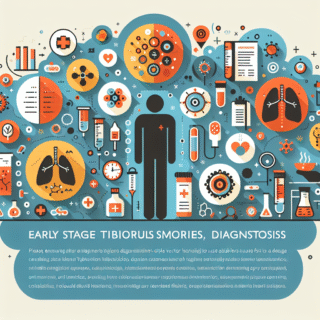
More Ear, Nose & Throat Articles
TB Symptoms Early Stage: Diagnosis and Treatment Options

Detecting tuberculosis before it progresses is critical for successful treatment and reducing spread. In the early stage many people have subtle signs that can be mistaken for a cold, allergies, or another respiratory issue. Recognizing those subtle cues and seeking medical evaluation promptly improves outcomes and shortens the period during which someone might unknowingly transmit the infection to others.
Recognizing early-stage signs
Tuberculosis often develops gradually. In the early-stage phase a person may notice low-grade fever, mild cough, night sweats, or unexplained fatigue. Because these indicators overlap with many common illnesses, they are frequently overlooked. Pay attention if symptoms persist beyond two weeks or are accompanied by weight loss, persistent cough that produces sputum, or coughing up blood.
Common symptoms to watch for
Understanding tuberculosis early stage symptoms helps both patients and clinicians prioritize testing. Typical manifestations include:
- Persistent cough (two weeks or more)
- Unintended weight loss and decreased appetite
- Night sweats and low-grade fevers
- Fatigue and weakness
- Chest pain or shortness of breath in more advanced cases
When people search for symptoms of early stage tb or tb symptoms early stage, they are often trying to distinguish this pattern from viral bronchitis or chronic conditions like COPD. If you belong to a higher-risk group — recent contact with someone with active TB, travel or residence in high-prevalence areas, immunosuppression, or living in congregate settings — be especially vigilant.
How tuberculosis is diagnosed
Diagnosis starts with a detailed history and physical exam. Clinicians will typically order a chest X-ray and laboratory tests. A skin test (Mantoux tuberculin skin test) or interferon-gamma release assays (IGRAs) can detect immune response to Mycobacterium tuberculosis, while sputum samples are examined for acid-fast bacilli and cultured to confirm active disease. Molecular tests (nucleic acid amplification) provide faster confirmation in many settings.
Because tuberculosis can be latent (no symptoms) or active, clinicians interpret test results alongside symptoms and imaging. If you suspect tuberculosis early stage symptoms, insist on appropriate diagnostic testing rather than waiting for more obvious signs.
Treatment options and what to expect
Treatment for active pulmonary TB involves a combination of antibiotics taken for several months to ensure eradication and prevent resistance. The standard initial regimen usually includes isoniazid, rifampin, ethambutol, and pyrazinamide for the first two months, followed by a continuation phase with fewer drugs for four months or longer, depending on individual factors. Drug-resistant TB requires specialized regimens and often a longer course of therapy under specialist supervision.
Directly Observed Therapy (DOT) is sometimes recommended to ensure adherence; with DOT, a healthcare worker watches the patient take each dose. Side effects can occur (liver irritation, visual changes, peripheral neuropathy), so regular monitoring is important during treatment. If you need guidance on finding a qualified practitioner, consider reaching out to established clinicians like the one profiled at Dr. Gary R. Mason’s practitioner profile for a starting point on care options.
Prevention and follow-up
Preventive strategies include screening contacts of people with active TB, offering preventive therapy for latent infection, and maintaining good ventilation and infection control in high-risk settings. Vaccination with BCG is used in some countries and can reduce severe forms of TB in children, though its effectiveness against pulmonary TB in adults varies. For up-to-date, authoritative information on TB prevention and clinical guidance, refer to the CDC’s tuberculosis basics resource.
CDC: Tuberculosis (TB) — Basics
- Takeaway: Early detection shortens illness and reduces transmission risk.
- Takeaway: Persistent cough, night sweats, weight loss, and fatigue are key early clues.
- Takeaway: Diagnosis combines skin or blood tests, imaging, and sputum studies.
- Takeaway: Standard multi-drug therapy is highly effective when taken as prescribed.
Q: How long after exposure do tuberculosis early stage symptoms appear?
A: TB incubation varies. Some people develop active disease within weeks to months after exposure; others may harbor latent infection for years before symptoms appear. Regular screening after known exposure helps identify latent infection early.
Q: Can early TB be mistaken for a cold?
A: Yes. Many tuberculosis early stage symptoms overlap with common respiratory infections. A persistent cough lasting more than two weeks, especially with systemic signs like weight loss or night sweats, should prompt evaluation for TB rather than assuming a simple cold.
Q: Is treatment for latent infection different from active TB?
A: Yes. Latent TB is treated with fewer drugs and shorter regimens designed to prevent progression to active disease, while active TB requires multiple antibiotics over a longer duration and careful monitoring for side effects and adherence.














